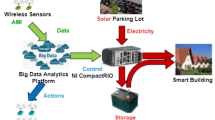Abstract
This paper investigates the use of artificial intelligent models as virtual sensors to predict relevant emissions such as carbon dioxide, carbon monoxide, unburnt hydrocarbons and oxides of nitrogen for a hydrogen powered car. The virtual sensors are developed by means of application of various Artificial Intelligent (AI) models namely; AI software built at the University of Tasmania, back-propagation neural networks with Levenberg–Marquardt algorithm, and adaptive neuro-fuzzy inference systems. These predictions are based on the study of qualitative and quantitative effects of engine process parameters such as mass airflow, engine speed, air-to-fuel ratio, exhaust gas temperature and engine power on the harmful exhaust gas emissions. All AI models show good predictive capability in estimating the emissions. However, excellent accuracy is achieved when using back-propagation neural networks with Levenberg–Marquardt algorithm in estimating emissions for various hydrogen engine operating conditions with the predicted values less than 6% of percentage average root mean square error.





Similar content being viewed by others
References
ISO 1550:2002(E) Internal combustion engines—determination and method for the measurement of engine power—general requirements. International Standards Organisation, 2002
Yap WK, Karri V (2007) Regenerative control systems for plug-in hydrogen fuel cell scooter. In: Proceedings of 2007 international conference on engineering sustainability, Western Australia, pp 1−6
Hafez HA, Karri V (2005) A study of diesel-hydrogen fuel consumption in a compression engine generator set. In: Proceedings of fourth mediterranean combustion symposium, Lisboa, Portugal, pp 1–10
Karri V, Hafez HA, Kirkegaard JF (2006) A study of diesel-hydrogen fuel exhaust emissions in a compression ignition engine/generator assembly. In: Proceedings of second international conference on thermal engineering theory and applications, Al-Ain, UAE, pp 385−388
Lim JSD (2007) Development of a hydrogen car and emissions modelling using artificial intelligence tools. Master of Engineering Science Thesis, University of Tasmania
Hafez H, Karri V, Kristiansen M (2005) Preliminary investigation to use bayesian networks in predicting NO x , CO, CO2 and HC emissions. In: Proceedings of IASTED international conference on energy and power systems. Krabi, Thailand
Danny STB (2007) Study of the performance of a four cylinder hydrogen-fuelled internal combustion engine. Master of Engineering Science Thesis, University of Tasmania
David Andrew Butler (2006) Enhancing Automotive Stability Control with Artificial Neural Networks. PhD of Engineering Science Thesis, University of Tasmania
Lim, D, Karri, V, Barrett, DT (2007) Intelligent approach to predicting emission performance in hydrogen power car. In: Proceedings of international conference on modelling and simulation, Coimbatore, India, pp 1−6
Karri V, Frost F (2000) Application of general regression neural network for estimation and control in a dynamic industry environment. In: Proceedings of the international conference on artificial intelligence in science and technology—AISAT 2000. Tasmania, Australia
Karri V, Frost F (1999) Optimum back propagation network conditions with respect to computation time and output accuracy. In: Third international conference on computational intelligence and multimedia applications (ICCIMA’99). New Deli, India
Michael Negnevitsky Artificial Intelligence (2005) A guide to intelligent systems. Addison-Wesley, Harlow, pp 346−349
Maren AJ, Harsten CT, Pap RM (1990) Handbook of neural computing applications. Academic Press, New York, pp 7–9
MATLAB Inc. (2001) MATLAB neural network tool box and ANFIS
Acknowledgments
The authors are deeply grateful Dr Sergio Giudici, Hydro Tasmania Pty Ltd for financial support and all of the Hydrogen and Allied Renewable Technology research members as well as Intelligent Hydrogen Car project for sharing ideas and concept along the way.
Author information
Authors and Affiliations
Corresponding author
Rights and permissions
About this article
Cite this article
Karri, V., Ho, T.N. Predictive models for emission of hydrogen powered car using various artificial intelligent tools. Neural Comput & Applic 18, 469–476 (2009). https://doi.org/10.1007/s00521-008-0218-y
Received:
Accepted:
Published:
Issue Date:
DOI: https://doi.org/10.1007/s00521-008-0218-y




